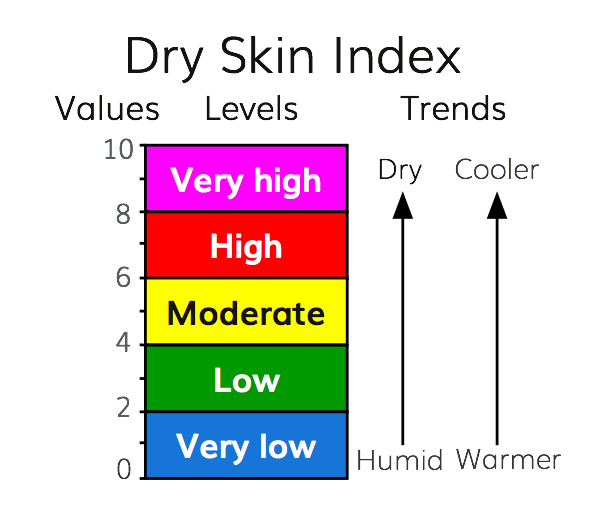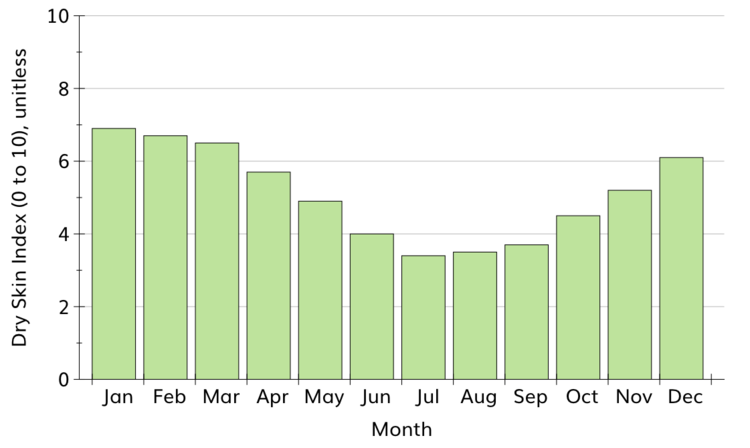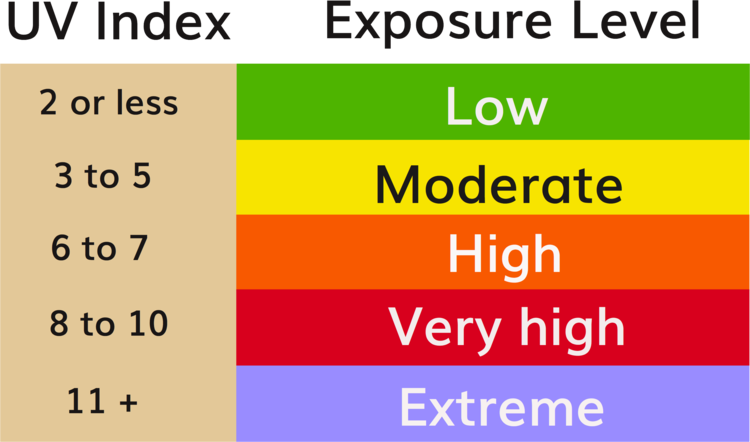Monitor skin stressors
One of the keys for achieving healthy skin all year long is to be constantly aware of the magnitude of external stresses on your skin, including drying stresses caused by changes in indoor relative humidity and temperature and exposure to solar ultraviolet radiation.
Indoor Drying Stresses on Skin
The Dry Skin Index (or DSI) is used to represent the magnitude of external drying stresses on the outer layer of the stratum corneum. It is calculated from measurements of indoor relative humidity and temperature using a humidity/temperature sensor.
The DSI is a scale from 0 to 10, broken down into the following categories:
- Very low (DSI 0 to 2)
- Low (DSI 2 to 4)
- Moderate (DSI 4 to 6)
- High (DSI 6 to 8)
- Very high (DSI 8 to 10+)
The actual response of your skin to external drying stresses depends on its physicochemical properties such as natural moisturizing agents, which help hydrate skin, and your normal skin-care practices.

At low DSI values, indoor humidity is high and the skin is hydrated. As the DSI increases above 4, drying stresses are rising and the potential need for skin-care interventions become more important.
Changes in the Dry Skin Index
The Dry Skin Index changes in response to seasonal variations in outdoor water vapor levels. To illustrate, the adjacent plot shows average monthly DSI values for a sample of houses in the northeastern US.
In the summer months, the DSI levels are low because high water vapor levels in outdoor air also keep relative humidities indoors high, which reduces drying stresses on skin. In the fall months, the atmosphere dries out and associated indoor humidities decline, resulting in increases in the DSI.

Monitoring the DSI specific to your house will help you implement the appropriate skin-care options.
UV Sunlight Exposure Index
The UV index uses a scale from 1 to 11+ to indicate the severity of ultraviolet irradiation, and includes a biologically-weighted integration of both UVA and UVB radiations.
The adjacent chart shows the hourly Clear Sky UV Index (UVI) categories. The simulated UVI for a given location is based on the orientation of the earth with regards to the sun, an ozone forecast (ozone adsorbs UV radiation), and elevation (UV radiation increases with elevation).

Clear-sky UVI predictions can be considered upper-bound values because they do not incorporate reductions due to cloud cover, rain, etc.
